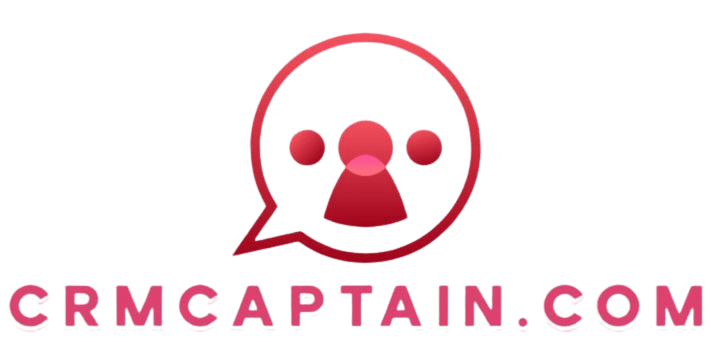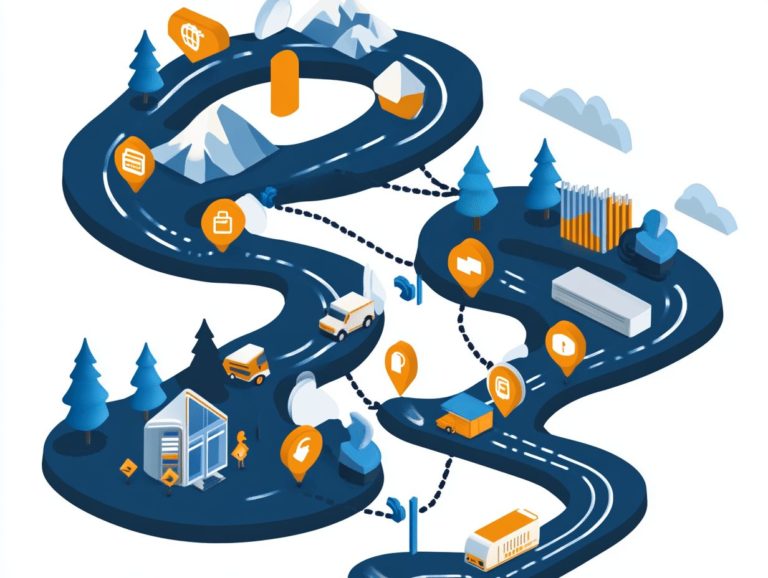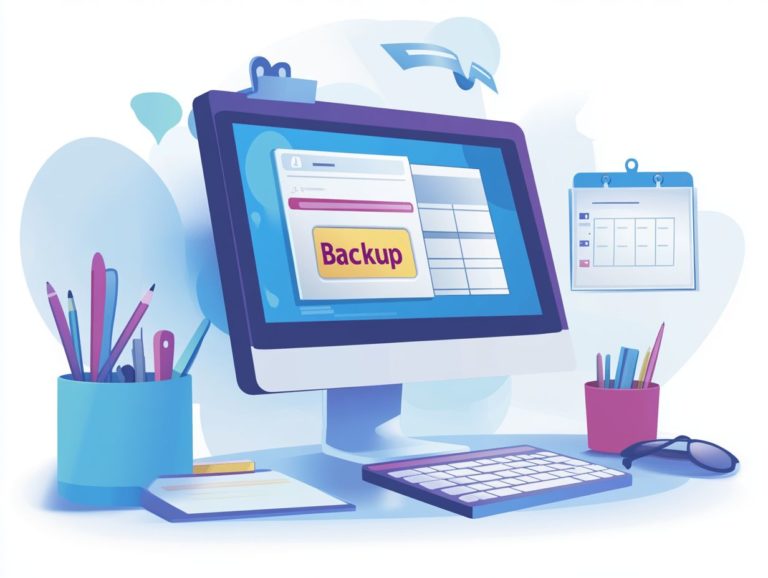How to Transition from Legacy Systems to CRM
In today s fast-paced business landscape, you ll see that transitioning from legacy systems to a Customer Relationship Management (CRM) platform can truly be a game-changer.
This article explores the key benefits of this shift. You ll see enhanced business growth and improved efficiency.
However, the journey isn t without its challenges think data migration hurdles (the process of transferring data from one system to another) and the critical need for team buy-in.
You ll be guided through a structured approach to navigate this transition. We will equip you with best practices for a seamless process and key metrics to track your ongoing success.
Dive in and uncover how to effectively modernize your systems and propel your business forward.
Contents
- Key Takeaways:
- The Importance of Transitioning from Legacy Systems to CRM
- Challenges of Transitioning from Legacy Systems to CRM
- Steps for a Successful Transition
- Best Practices for Transitioning to CRM
- Measuring Success and Ongoing Maintenance
- Frequently Asked Questions
- What is the first step in transitioning from legacy systems to CRM?
- How can I ensure a smooth transition process?
- Common Challenges in Transitioning to CRM
- How can I involve my team in the transition process?
- What are some benefits of transitioning to a CRM system?
- What are some best practices for transitioning from legacy systems to CRM?
Key Takeaways:

Don t miss out transitioning to CRM is crucial for immediate business growth and efficiency, including benefits like improved customer satisfaction and streamlined processes.
Challenges in the transition process can be overcome by identifying common obstacles and implementing effective strategies such as thorough planning and data migration.
A successful transition requires proper planning, data migration and integration, and training and adoption of the new system.
Ongoing maintenance and tracking key metrics are also important for continued success.
The Importance of Transitioning from Legacy Systems to CRM
Transitioning from legacy systems to modern Customer Relationship Management (CRM) solutions is an important move for your business to elevate client engagement and boost operational efficiency. For successful implementation, consider integrating CRM with existing systems to ensure compliance with regulations such as GDPR.
While legacy systems served their purpose, they often lack flexibility. Security is crucial in today s data-driven landscape.
It s essential for your business to embrace cloud-based technologies that facilitate transformation and enhance user experience.
By investing in CRM software, you can easily customize it to meet your clients’ needs, streamline workflows, and leverage innovative tools that pave the way for sustainable growth.
Benefits for Business Growth and Efficiency
Transitioning to a sophisticated CRM system is essential for driving your business growth and enhancing operational efficiency. This strategic move offers a multitude of advantages that enable you to elevate client engagement and streamline processes.
By optimizing client management through centralized data storage and easy access to customer interactions, you can cultivate stronger relationships and boost retention rates.
The automation capabilities of CRM tools free your team to concentrate on strategic initiatives rather than getting bogged down by repetitive tasks. This significantly cuts down the time spent on manual processes.
This system provides useful insights by tracking performance indicators, allowing you to make informed decisions that align with your growth objectives. Successfully adopting these strategic tools enhances efficiency and enables your company to swiftly adapt in a competitive market.
Challenges of Transitioning from Legacy Systems to CRM
Transitioning from legacy systems to a CRM can be a complex journey that you must navigate with care. For insights on how to transition to a new CRM system, this process can significantly influence user adoption, data integrity, and the overall success of your integration efforts.
Each challenge requires thoughtful consideration to ensure a smooth and effective transition.
Common Obstacles and How to Overcome Them
Organizations frequently encounter common hurdles when transitioning to CRM, such as employee resistance, insufficient training, and the mismanagement of the data migration process. These challenges can impede progress, leading to delays, soaring costs, and a dip in staff morale.
To effectively navigate these obstacles, it is essential to implement comprehensive training programs tailored to varying user levels, ensuring that everyone feels confident in using the new system.
Establishing effective change management practices can ease transitions, encouraging employees to embrace new workflows instead of pushing back against them. Careful planning during data migration is likewise crucial; organizations should prioritize data cleansing and validation to avoid future complications.
By proactively addressing these challenges, businesses can boost user adoption and fully capitalize on the benefits of their CRM systems.
Steps for a Successful Transition

To achieve a successful transition from legacy systems to CRM, you need a clear plan. This plan should include thorough planning, precise data migration, and preparing for CRM software upgrades to ensure comprehensive training.
This ensures user adoption and facilitates seamless integration, setting the stage for a smooth and effective transformation.
Planning and Preparation
Effective planning and preparation are the cornerstones of your CRM transition. They set the stage for a seamless migration process and ensure that all stakeholders are aligned with your overall strategy.
This meticulous approach minimizes disruptions and fosters collaboration among your team members.
Engaging stakeholders early in the process helps gather diverse insights that enhance your migration strategy. Thorough documentation acts as your blueprint, guiding teams through various phases and ensuring following the necessary rules and regulations.
Prioritizing these elements allows you to navigate challenges with greater ease and work towards achieving outcomes that benefit everyone involved.
Data Migration and Integration
Data migration and integration are important in your CRM transition. They demand robust strategies and tools, such as ETL (Extract, Transform, Load), which is a way to move data from one system to another by first extracting it, then changing its format, and finally loading it into the new system.
These processes help extract relevant information from your existing databases, transform that data into a usable format, and load it into your new system.
Effective data mapping is a critical component of this transition; it ensures that data fields align correctly between the old and new systems, preserving their meaning and accuracy.
Prioritizing data security throughout this integration is vital to protect sensitive information from breaches and maintain compliance with regulations.
Ultimately, executing these processes successfully not only safeguards your data integrity but also enhances your CRM effectiveness, enabling you to engage better with your customers.
Training and Adoption
Training and user adoption are essential elements of your CRM transition. They require effective communication strategies and active involvement from stakeholders to cultivate a culture of acceptance and engagement.
For a smooth transition, act quickly to develop training programs that cover not just the technical aspects of the CRM but also the emotional and social dynamics that impact user engagement.
By fostering open dialogue with stakeholders, you can pinpoint specific performance-related concerns and tailor your training sessions accordingly. This strategy nurtures a supportive environment, making individuals feel valued and enabled.
Implementing continuous feedback mechanisms and follow-up training reinforces learning and boosts confidence. This ultimately leads to successful adoption and enhanced performance across your organization.
Best Practices for Transitioning to CRM
Implementing best practices during your transition to a CRM system is crucial for maximizing user experience and ensuring a seamless migration process. This approach enhances the user journey and contributes significantly to improved organizational performance.
Tips for a Smooth Transition Process

To ensure a seamless transition to CRM, embrace key strategies that enhance user experience, facilitate effective training, and leverage automation tools with finesse. This journey demands a strategic approach that places user needs at the forefront while seamlessly integrating technology into their daily workflows.
First and foremost, involve your team members early in the process; gather their feedback to customize the system to their preferences. Robust training programs are essential they should be engaging and ongoing, helping users adapt with ease.
Automation tools can be a game-changer, streamlining repetitive tasks and freeing up your employees to concentrate on more valuable activities. By focusing on these strategies, you can make the overall transition feel less daunting and more advantageous for everyone involved.
Measuring Success and Ongoing Maintenance
Measuring success and ensuring ongoing maintenance after the transition are essential for the long-term effectiveness of CRM systems.
This approach enables you to continually enhance user experience and meet your performance indicators.
Key Metrics to Track and Maintain
Tracking key metrics is vital for understanding how well your CRM implementations are working and ensuring high levels of user adoption and client engagement.
Prioritize monitoring user adoption rates; these reveal how effectively your teams are integrating the new system into their daily operations.
Client engagement levels are critical indicators of success, highlighting how effectively your organization nurtures relationships after the transition.
By continuously analyzing these metrics, you can identify any gaps in usage or engagement, enabling timely adjustments that enhance the overall experience.
Regular assessments help cultivate an adaptive strategy, ensuring that your CRM not only meets current needs but also evolves alongside your organization for sustained success.
Frequently Asked Questions
What is the first step in transitioning from legacy systems to CRM?
The first step is to look at your old systems and identify the key business processes and data that need to be transferred to the CRM system.
How can I ensure a smooth transition process?

You must have a well-defined transition plan with clear timelines and responsibilities assigned to team members. Regular communication and training sessions can also help ensure a smooth transition process.
Common Challenges in Transitioning to CRM
Some common challenges include data migration and integration issues, resistance from employees accustomed to the legacy systems, and the cost of implementing a new system.
How can I involve my team in the transition process?
Involving your team in the transition can ease the process and gain their buy-in. Engage them in evaluation and decision-making, and provide training and support during the transition.
What are some benefits of transitioning to a CRM system?
Benefits include improved customer relationship management, streamlined processes, better data analysis and reporting capabilities, and increased overall efficiency and productivity.
What are some best practices for transitioning from legacy systems to CRM?
Best practices include involving key stakeholders in decision-making, thoroughly testing and training before full implementation, and continuously evaluating and improving the system after the transition. Always have a backup plan for any issues during the transition.
For more information on transitioning to a CRM system, feel free to contact our team.






